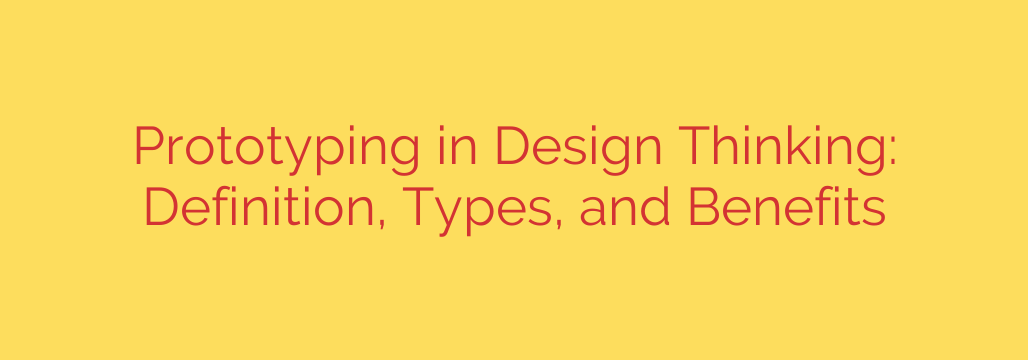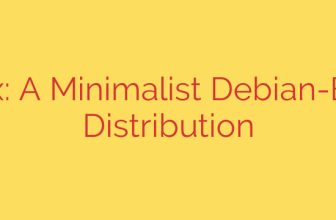
A Deep Dive into Prototyping for the Design Thinking Process
Before you write a single line of code or invest significant resources into a new idea, how can you be sure it will solve a real-world problem? The answer lies in one of the most powerful stages of the design thinking framework: prototyping. Far from being just a preliminary model, prototyping is a dynamic tool for learning, testing, and refining your vision.
By creating tangible versions of your ideas, you move from abstract concepts to concrete solutions that can be tested with real users. This guide explores what prototyping is, its crucial benefits, and the different types you can use to bring your ideas to life and ensure you’re building products that people truly need and love.
What is Prototyping in the Context of Design Thinking?
In its simplest form, a prototype is an experimental model of an idea that allows you to test assumptions and validate solutions before committing to full-scale development. It can be anything from a simple paper sketch to a fully interactive digital mockup.
The primary goal of prototyping is not to create a finished product, but to answer a specific question. Are we solving the right problem? Is this navigation intuitive? Does this feature add value? By building a prototype, you create a focused experiment to gather feedback, learn quickly, and make informed decisions. It’s a conversation starter that allows stakeholders and users to see, touch, and interact with your concept, providing invaluable insights that words alone cannot.
The Crucial Benefits of Early Prototyping
Integrating prototyping into your workflow isn’t just a “nice-to-have” step; it’s a strategic advantage that offers significant returns.
- Gather Actionable Feedback: Prototypes allow you to put your ideas in front of real users early and often. This feedback is essential for identifying flaws and uncovering new opportunities you might have missed.
- Save Time and Money: Identifying a design flaw on a paper sketch is infinitely cheaper and faster than fixing it after the product has been coded and launched. Prototyping helps you fail fast and cheap, preventing costly rework down the line.
- Improve Collaboration and Alignment: A tangible prototype serves as a single source of truth for your entire team. It ensures that designers, developers, and stakeholders share a common understanding of the vision, minimizing misinterpretations and aligning everyone toward a common goal.
- Reduce Development Risk: Every new product carries inherent risks. Prototyping systematically de-risks the development process by validating user needs and testing functionality, increasing the likelihood of market success.
Understanding the Different Types of Prototypes
Prototypes are not one-size-fits-all. They exist on a spectrum of “fidelity,” which refers to how closely they resemble the final product in terms of detail and functionality. Choosing the right fidelity depends on what you need to learn.
Low-Fidelity (Lo-Fi) Prototypes: The Starting Point
Lo-fi prototypes are simple, fast, and inexpensive to create. They focus on testing the core concept, user flow, and overall structure rather than visual aesthetics.
- What they are: Quick sketches, paper mockups, storyboards, or card sorting exercises.
- When to use them: In the earliest stages of ideation to explore different approaches, validate the basic concept, and test information architecture.
- Key Advantage: Because they are rough and unpolished, users feel more comfortable giving honest, critical feedback without worrying about offending the designer.
Medium-Fidelity (Mid-Fi) Prototypes: Adding Structure and Detail
Mid-fi prototypes bridge the gap between a conceptual sketch and a polished design. They have more detail and structure but still avoid intricate visual elements like color and typography.
- What they are: Often called wireframes, these are digital, clickable mockups created with tools like Balsamiq or Sketch. They define the layout, navigation, and placement of key elements.
- When to use them: To test usability, interaction patterns, and the overall user journey without the distraction of a full visual design.
- Key Advantage: They provide a realistic sense of the product’s structure and flow, allowing for more specific usability testing.
High-Fidelity (Hi-Fi) Prototypes: The Final Polish
High-fidelity prototypes are the most realistic representations of the final product. They are visually detailed, highly interactive, and often indistinguishable from a live application.
- What they are: Pixel-perfect, interactive mockups created in tools like Figma, Adobe XD, or InVision. They include color, typography, content, and complex animations.
- When to use them: For final usability testing, stakeholder demonstrations, and providing clear specifications for the development team.
- Key Advantage: They offer the most realistic testing environment and are invaluable for securing buy-in from leadership and preparing for the final development handoff.
Actionable Tips for Effective Prototyping
To make the most of your prototyping efforts, keep these best practices in mind:
- Start with a Question: Before you build anything, define what you want to learn. Are you testing a user flow, an interface element, or the overall value proposition? A clear goal ensures your prototype is focused and your feedback is relevant.
- Choose the Right Fidelity: Don’t build a high-fidelity prototype when a simple paper sketch will do. Match the level of detail to your learning objective to avoid wasting time and resources.
- Don’t Get Attached: Remember that a prototype is a disposable tool for learning. Be prepared to receive critical feedback and throw your ideas away if they don’t work. The goal is a successful product, not a perfect prototype.
- Test with Real Users: While internal feedback is helpful, nothing replaces the insights gained from observing real people interacting with your prototype.
- Iterate Based on Feedback: Prototyping is a cycle. Use the feedback you gather to refine your design, build a new version, and test again. This iterative loop is the engine of innovation.
By embracing prototyping, you transform assumptions into knowledge and ideas into validated solutions. It is an indispensable practice for any team committed to building user-centric products that succeed in the real world.
Source: https://www.simplilearn.com/prototyping-in-design-thinking-article








